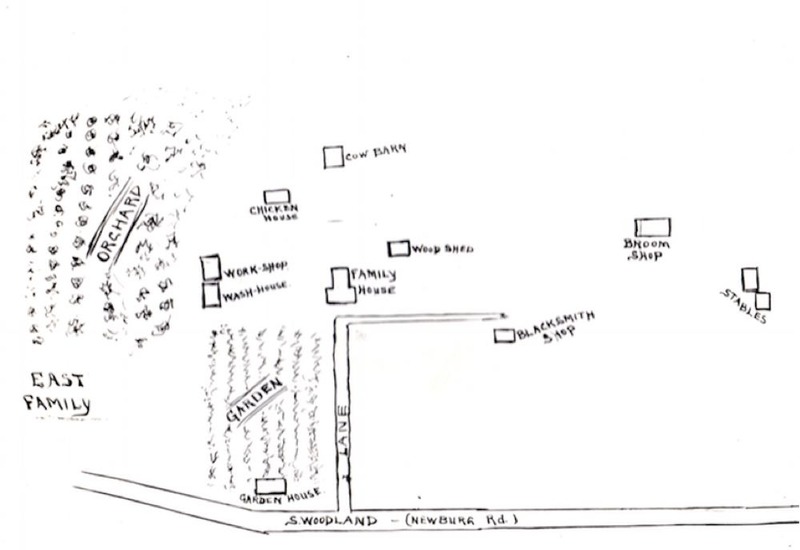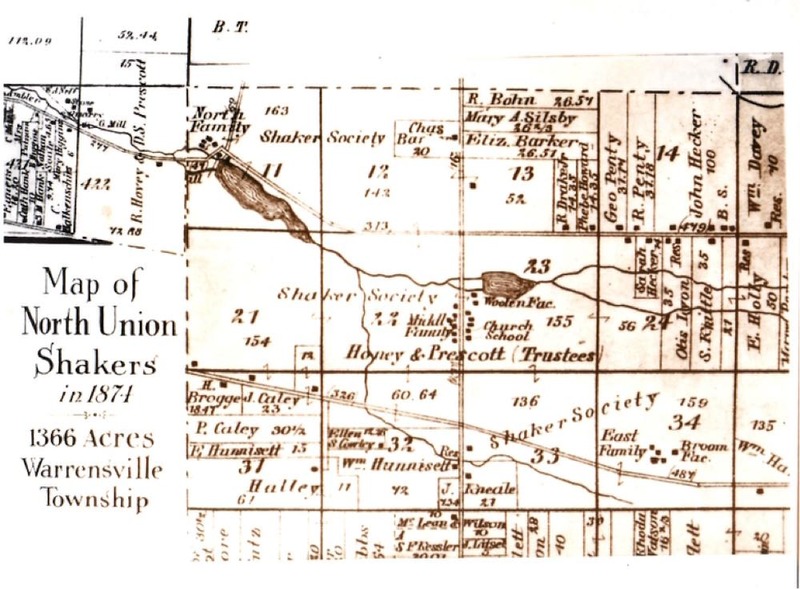
In 1811 Jacob Russell moved his family from their home in Windsor Locks, Connecticut, into the wilderness of the Connecticut Western Reserve. Upon his arrival, Russell purchased 475 acres in Warrensville Township, founded by the Daniel Warren family from Ackworth, New Hampshire, in 1808. Ralph Russell, the ninth of twelve Russell children, first visited his parents' tracts of land in 1811. After his visit, he returned to Connecticut to lead 18 other Russell family members to the Northeast Ohio settlement in 1812. Between 1818 and 1821, Ralph Russell experienced a whirlwind of life events. In 1818 he married Laura Ellsworth, a childhood friend from Connecticut. Then in 1821, the patriarch of the Russell family, Jacob Russell passed away.
Ralph Russell was stricken with grief due to the loss of his father and traveled to Lebanon, Ohio, to seek spiritual guidance from the Union Village Shaker Community in 1822. Russell was so moved by the beliefs and teaching of the Shakers that he returned to his family's settlement and began converting family members to his newfound religion. Russell converted three of his brothers to the religion, and they dedicated their family, land, and belongings to the North Union settlement, land within modern day Shaker Heights and Cleveland Heights. The first official meeting of the North Union Shaker community occurred in 1828, where 36 members signed the Covenant, officially dedicating their lives to Shakerism. Oddly enough, Ralph Russell's name does not appear on the Covenant. Russell and his family later moved away from the community to Aurora, Ohio, where he lived until his death in 1866.
Visitors to meetings of The United Society of True Believers in Christ's Second Appearing named them "Shakers" or "Shaking Quakers" due their sporadic and erratic movements during worship. Although it was not their official name, the Shakers across America adopted the nickname and used it in the marketing of their products. The Shakers were one of a number of utopian-minded sects that originated in the "Burned Over District" in western New York and were inspired by the Second Great Awakening, such as the Oneidas, Millerites, and Mormons. Founded by Mother Ann Lee, who immigrated to the United States from Manchester, England, in search of religious freedom in 1774, the Shakers were known for their communal living, pacifism, celibacy, and equality amongst all people. Within their communities, men and women were viewed as equals. Men and women leaders, called Elders and Eldresses, were viewed as having the same level of power within the community. The Shakers enjoyed a reputation as hardworking and industrious people who lived their motto of "Put your hands to work and your Hearts to God."
At their height of membership in the 19th century, the Shakers occupied a total of 24 settlements in the United States. Shaker settlements worked within certain industries not only to put their hands to work, but also to provide for community members and generate economic stability for the community. North Union was no exception. The North Union community, who named this place "The Valley of God's Pleasure," was known for bee keeping, broom making, textile production, blacksmithing, animal husbandry, and harvesting seeds and herbs used for cooking and medicinal purposes. The community made sure that all of the needs of the community members were met before selling their products and services to the "outside world." For North Union, interaction with the outside world usually consisted of doing business at markets in downtown Cleveland and at Doan's Corners (East 105th and Euclid Avenue - present day University Circle).
Shaker communities were divided into different families where familial ties were dissolved, and everyone became a Shaker brother or Shaker sister. North Union was divided into three families: Mill, Center, and East. These families were relatively autonomous as each had its own Elder, Eldress, Deacon, and Deaconess. The Mill family was closest in proximity to and worked in the community's mills, and the East family oversaw childcare and education for new converts. The Center family was the most spiritually advanced and served as the administrative center for the whole community. North Union took in orphans and runaways. After completing a "novice period" and signing a covenant to give up all their personal belongings, new members were assigned to a junior family order. Each family played a significant role in the development of North Union, which reached its peak membership of 300 Shakers by 1850.
In 1843, the North Union Shakers claimed that Jesus Christ visited their community for three months. Nonetheless, by the 1870s any residual excitement from the purported visit had surely dwindled in the North Union Shaker community. Although the North Union Shakers took in orphans and runaways, it was not enough to overcome the repopulation challenges resulting from their celibate beliefs. Along with the decrease in devout dedication to Shaker beliefs after the Civil War, the lure of industrialization pulled the younger members away from the community. The remaining members decided to move to southwestern Ohio Shaker colonies, and the North Union settlement officially closed in 1889. Also, it has been suggested that Brother Joseph Slingerland influenced the sale of North Union in order to strengthen Union Village and bolster that community, which continued until July 1920.
Images









